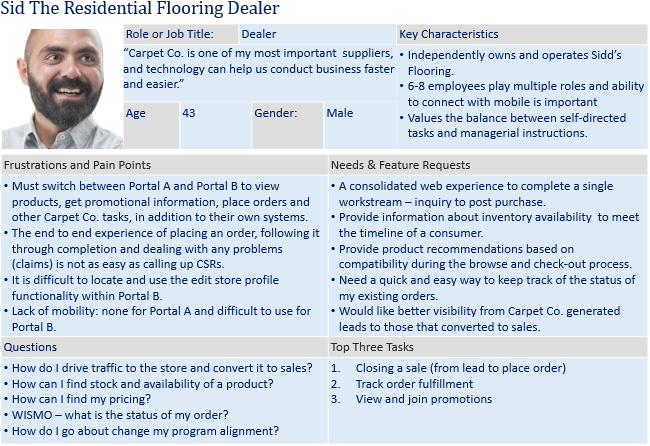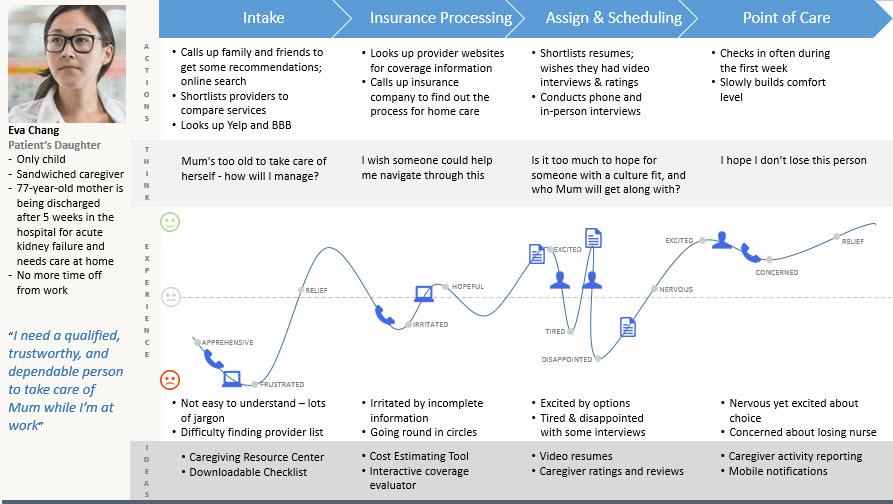Introducing Your User
Episode #4 of the course User experience design for non-designers by Lyndon Cerejo
Welcome to Day 4 of our course on design and user experience!
Yesterday, we discussed different methods of User Research to get a good understanding of our users.
In today’s email, we will look at ways to make our findings from User Research actionable for everyone involved in the design and development process to share a common understanding of your users and empathize with them. Common ways to bring our users and their needs to life include personas, journey maps, and user requirements.
Personas
Personas are realistic representations of your key user groups, based on User Research. A persona is not an actual user, but a representative, fictional user who accurately represents and highlights important features of the user group. We assign a name, picture, background, characteristics, and expectations to bring a persona to life. We also address the major needs, expectations, common tasks, and pain points as part of the persona description. We create personas by using the elements of these characteristics that are relevant and important to the design project.
Actionable personas allow the entire project team to keep them in mind during design and development. Personas appear in many shapes and sizes, but here’s an example of a persona representing the user group of flooring dealers who cater to residential customers (have you carpet shopped lately?):

A variation of personas are proto-personas, which are similar to personas but are not based on User Research. They are created based on stakeholder assumptions or secondary research, often when there is no time or money to conduct actual research, and can be used to ensure stakeholder alignment.
Customer Journey Map
A customer journey map is a visual representation of a customer’s experience as they interact with a company across their customer lifecycle. The customer journey map is usually for a certain persona and can focus on a certain part of the lifecycle (purchase experience) or the entire end-to-end experience.
“Customer journeys are collections of touchpoints between users and organizations. A touchpoint is defined by a combination of channel, device, and user task.” —Nielsen Norman Group
Below is a sample journey map of a user looking to find a medical caregiver for a parent.

A customer journey map highlights a user’s actions, thoughts, and feelings as they interact with an organization, often across multiple channels (email, phone, web, app) and devices (phone, computer).
Like personas, journey maps are varied in design and detail, tailored for the client and project. Similar to personas, journey maps help everyone in the organization understand and empathize with their customers.
User Requirements
User requirements are different from business requirements. We create user requirements based on user observations. For instance, while redesigning an application for insurance agents, we observed multiple insurance agents struggling between multiple windows to compare two insurance quotes. That translated into a user requirement: the ability to compare quotes side by side on a single screen. The original business requirement was the ability to compare quotes (which was technically fulfilled, though not in a usable format), but the users had to struggle to do the comparison. We need to understand the background to these user requirements and reconcile and prioritize both sets of requirements.
Personas and journey maps are powerful reminders to everyone involved in the design and development process of whom they are designing for. When faced with a design decision, I’ve seen stakeholders and team members ask, “Will this help or hinder Sid (or their persona)?”, keeping users at the center of the design process. That’s powerful!
“If you design for everyone, you delight no one. That is the recipe for a mediocre product.” —Alan Cooper
Our next email moves into the UX Design phase as we focus on the building blocks of user experience.
Here’s to design through your user’s eye!
Lyndon
Recommended resource
Adaptive Path Guide to Experience Mapping (free download)
Recommended reading
How Channels, Devices, and Touchpoints Impact the Customer Journey
Share with friends

